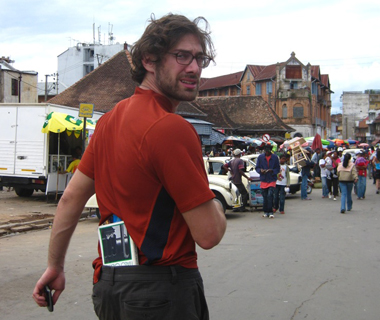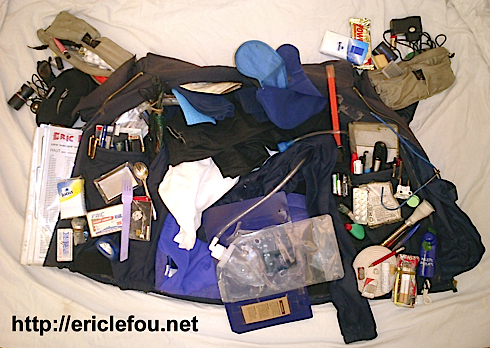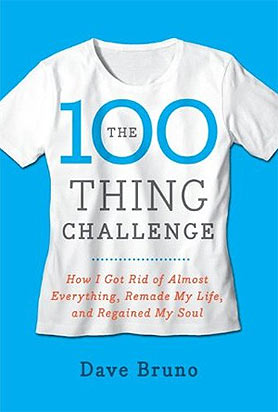Travel Without Baggage
Can you seriously travel with no luggage at all?
Yes you can.
I’ve done it. Traveling with no bags is gloriously liberating. You move fast, close to the ground, spontenously. You feel unleashed, undefined by your possessions. It is just you and the world. I am convinced that with less stuff to manage you think different. You learn lots, fast.
I’ve done a few very short trips this way, and once I took a month-long journey in Sri Lanka without baggage. I would not want to travel this way all the time, but once you go with none, it is much easier to go with very little. It’s one of the oldest truism in the world: the less you travel with, the more you take back.
There are four modes of no-baggage travel these days:
1) Total Nada
2) Just Pockets
3) Day Baggers
4) Minimalist Borrowers
Total Nada. In this mode you take your passport, a toothbrush, some cash, a cell phone, the clothes you are wearing, and that’s it. It’s pretty radical. You have to be in a certain zen state to enjoy this, but like many things, once you jump in it is not hard to do. This mode is great if you are drifting, going with the flow, and not trying to do anything else. If your travel entails producing something, you’ll need tools (keyboard, or cameras, or books, or maps, or hand tools), which takes you out of this mode.
But a number of folks sail off this way every year. For one example, Jonathan Yevin travelled for a month in Latin America in Total Nada mode. He wrote of his adventures in Budget Travel. That’s him below with all his luggage.

I just completed a month-long, bag-free trip through Central America. I ran the full length with nothing but the clothes I was wearing: cargo pants, maroon T-shirt, and gray fleece tied at the waist. On my person was an American passport, a Visa credit card, about $50, a toothbrush, a tiny Canon digital camera with extra battery, a Ziploc bag of vitamins, and a copy of The Kite Runner, whose chapters I tore off as I read them. Begging for toothpaste, it turns out, is a great way to make new friends.
…My lack of luggage did raise suspicions, among travelers and government officials alike. Border crossings were particularly interesting. Unsurprisingly, immigration agents were annoyed, as they clearly missed the opportunity to rummage through my bags in search of weapons or smuggled Rambo bubble gum. What about washing clothes? An amused agent asked, “vas a recorrer mi tierra desnudo?” (“You gonna run around my country naked?”) A valid point.
…I would recommend a second pair of socks; you can streamline by putting one in each pocket. Sweaty T-shirts and boxer briefs doubling as swim trunks can be dried in transit by hanging them from a car window (assuming the vehicle has windows).
Body odor notwithstanding, I was free to walk anywhere at any time and to completely improvise and revise my itinerary in liberating fits of spontaneity. All of which brought me into more intimate interaction with the people and places I came to visit.
Just Pockets. Pocket people carry no bag because they hide their stuff in cargo and vest pockets. You can cram a whole backpack’s worth of stuff into your pockets if you wanted to. And you can overdo it (see this guy below). Or this guy, Eric le Fou, who carries 1,300 things in his jacket pockets, weighing 12 kilos! There is some advantage to always having what you want right in your pockets, but most of the time pockets are emptied during the day, or the loaded vest left in the hotel room. Nonetheless pockets clearly limit what you can bring. They definitely keep the amomunt of gear down. And while it may seem like a simple case of semantics to wear gear instead of “carrying” it, there IS a perceived freedom in not having something extra on your shoulder or back.

Rolf Potts, an influential travel blogger, was inspired by Yevin’s 30-day no-bag travel and others to completely circumvent the world with no baggage. He found a clothing company (ScotteVest) that made pocket-rich pants and jackets to sponsor his trip, which was also filmed. His debriefing is here, including the list of the few items he carried in his pockets. (He manage to carry a foldable keyboard for his phone in order to keep blogging.)

What a pocket person carries. Marcus Fernandez, another round-the-wrold no-baggage traveler sponsored by ScotteVest, wears the clothes on the right and stuffs the items on the left into his pockets. I asked Marcus and his partner Jen, why they traveled with pockets instead of a small bag. They replied:
Since we aren’t carrying much with us and it all easily fits into our pockets, why bring a bag along? We would have brought a jacket on our trip anyway so we’re killing two birds with one stone. We also find that we worry less about our belongings being stolen since everything is on us. Bags are more easily misplaced or stolen. We have met many people during the trip who have had their bags stolen on a bus, at a cafe, etc. Several times we’ve been able to bypass security checkpoints at places like museums and even customs where they scan all bags. When we ‘pack’ in the morning, it hardly takes any time to throw stuff into our pockets. Yes, sometimes we forget what pocket we put something in but we can find it pretty quickly.
I also emailed Rolf Potts a few questions about pocket-only travel:
K: What is the advantage of carrying your few things in pockets versus a small bag?
P: Functionally, the vest served the same purpose as a bag — i.e. I could easily take it off and stow it. Most of the time I just hung the vest on a hanger in my hotel/hostel room and explored the city without it (keeping specific necessities, if I needed them, in my cargo pants). An advantage to pocket-only travel is that it leaves no room for anything extra. You can cram a few unnecessary extras into a daypack, but not a travel vest! It forces you to be disciplined with your minimalism. Most people will probably err on the side of a daypack, since it’s a more usual way of doing things. That said, pocket-style no-bag travel is pretty easy to get used to.
K: Next time will you also go with pockets?
P: I’ll probably opt for a daypack because as a travel writer I usually bring a netbook (which I prefer to a bluetooth/iPod setup). Plus with a daypack you don’t have to organize anything; you can just toss stuff in and fish it out.
K: Did you find yourself purchasing things locally even for a few day’s use, and then giving it away? Kind of just-in-time use.
P: A few times, like in South Africa when I needed insect repellent. But I did this a lot less than I thought I would. Had my trip been slower and longer I probably would have done a lot more of this. When I hit New Zealand it was quite cold, so I borrowed a sweater from a friend who lives there. Had I not had a friend living there, I probably would have gotten a sweater from a thrift store and given it away when I was done.
K: In the end what was the chief advantage of traveling with no luggage?
P: Simplicity and mobility. I didn’t have that much to worry about, and I didn’t have anything to slow me down. I could go wherever I wanted, whenever I wanted. Often my cameraman would lag behind me on walking-intensive days in places like London and Fez and Bangkok — and he was only carrying about 20 pounds of gear. It’s easy to get used to the freedom.
K: What surprised you most about travelling so light?
P: The biggest surprise was how easy it was. Once you get into the routine of using fewer items and washing your clothes each day, you don’t really miss anything.
Day Baggers. Not as radical as either Total Nada or Just Pockets, day bagging is still powerful and liberating. You need fit everything into one very tiny day pack. In this respect “no-luggage” means no luggage that you deposit. You only carry something you are willing to walk around all day with. I did a two week walk in the Cotswolds of England with a very tiny daypack, hiking from inn to inn and it was perfect. You can’t carry anymore than the Pocket People do. The only difference is that it’s all stuffed into a bag that you can set down at times.
To be honest, all three of these modes benefit from locations where the climate is constant. One freezing winter I flew from a trip in northern China directly to steaming Bombay India, and the need for two kinds of clothing killed my day bag plan. But when weather permits, I’ve done some “no-luggage” business travel, stuffing a change of clothes and a toothbrush into my computer bag.
Minimalist Borrowers. The final set of no-luggage travelers are a very few folks who are exploring a no-ownership lifestyle. These pioneers are trying to reduce the number of things in their homes and life to less than 100 objects, say.

So when they travel, they tend to move with little, but then borrow what they might need at their destination. Or they may buy what they need when they arrive and leave it behind when they leave. I met one fellow who flew to a wedding without luggage and bought his dress shirt and pants locally, and donated them before he flew home. He calculated this way of not “owning” stuff actually saved him money (cleaning, storing) in the long run, because he only bought things when he REALLY needed them, and then unowned them when he did not really need them. This minimalist mode is a surperfulous eradicator. Not for everyone, but another way to keep fleet.


